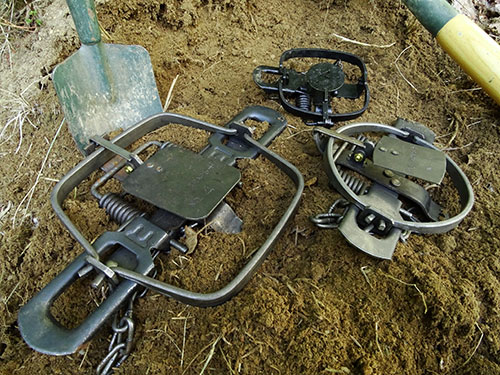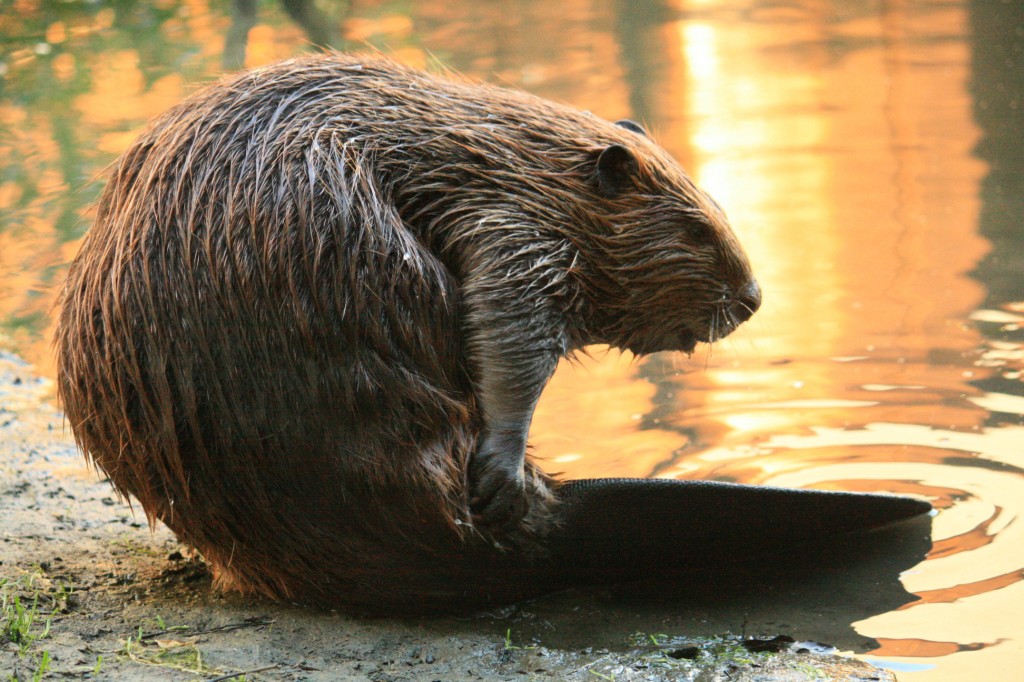Use low-maintenance sets on travel routes and wait for fur to pile up.
By Serge Lariviére
Anyone who knows me knows that patience is not one of my virtues. I simply hate waiting, and not surprisingly, I also do not like to make people wait. Some people say that time is money, but I honestly think time is much more valuable than money. And even when we don’t use it, we spend it. Regardless of what we do during a single day, at the end, that day is gone forever.
On the trapline, using time wisely is an essential skill for anyone who wishes to truly be effective and efficient. We all know the importance of pre-season preparation, making fast and simple sets and knowing when to move on when the catch starts slowing down.
But if time is valuable to the trapper, it can also be used wisely. There are times when patience is a good thing. There are even times when investing hours, days or even weeks into some sets might be productive. In fact, this counter-intuitive approach — making sets that are unlikely to catch anything, at least right away — might be the ultimate approach in a few specific situations.
With age and experience, I have become a little more patient and more willing to let sets sit a little longer to really provide them enough working hours to be productive. That is what I call patient trapping. The concept is worthwhile under a few specific situations and calls for a few simple rules to be most effective.
Stragglers and Dispersers
In most trapping situations, we make sets and try to catch animals that occupy the area where our sets are located on a regular basis. When you are trapping muskrats, beavers, raccoons and even foxes and coyotes, we usually seek places the animals are already frequenting and make sets to catch them when they come around. Often, such sets connect quickly, or are expected to. The sets should produce a very high catch ratio.
With beavers and muskrats, first checks usually provide catch ratios of well more than 50% and often get much closer to 75% to 80%. Not surprisingly, after the catch rate starts to drop, the traps must be pulled and moved to new areas if we want the catch rate to stay up. Foxes and raccoons might not reach rates as high, but good sets in active areas should produce fur, and should do so quickly.
Patient trapping is an alternative approach when animals are much less abundant, or when sets are made not for the resident animals but instead for the late-season stragglers or dispersers. In such locations, the first few days provide quick action as the few resident animals are removed and harvested, but then the location simply is too strategic to be pulled.
A wise trapper that identifies such locations might wish to make sets for animals that do not live there. These animals are not there immediately, but they will eventually drift through as they disperse from other areas and invade this freshly vacated territory. This is when trappers need to use patience as a tool and let some key sets sit in for a long period. These patient sets often will be there for several days, weeks, or even months in some cases, but they might produce with enough regularity to warrant their maintenance. Examples are many where a patient approach is worthy of consideration.
Heavy Trails on River Banks
Mega trails on the high banks of big rivers, out of reach of the water fluctuations, often provide an all-season set location. Sets in this location will produce almost immediately after being set, catching the local animals rapidly. But the trails also act as a major dispersal corridor for relocating young animals and, most importantly, adult raccoons looking for winter dens as the season advances. Such trails guarded with low-maintenance sets are definitely worth leaving in until the snow forces you out. Even then, baited sets left near these trails might still produce if a warm spell occurs, regardless of the date.
Foxes, coyotes, fishers, mink, bobcats and lynx also use such trails if you have them. I have often caught otters in these sets as well, despite the high and dry set location.
Depending on your local regulations, you might choose to guard such locations with snares, a few baited buckets or pails, bodygrip traps set blind in the trail or dog-proof traps right in the main pathway. My experience is that when multiple species might use the trails, set for all of them. I might set two small #120 bodygrip traps blind for mink, a half-dozen #220s for raccoons (and often foxes) and, if legal and possible, even a few larger coyote snares as high as possible.
The trick with patient trapping is to make sets that require as little maintenance as possible. When you check such sets, it should be like visiting a check station. You only get out to ensure that the traps are still all open sitting there waiting for a furbearer to come by. And in my book, an empty set in perfect working order is good news. It means that no animal came by and hence, I can move on quickly to my next dispersal location.
After the next wave of animals comes through, often after a front, major rainstorm or one of the first snow falls, the gang setting approach might yield amazing results. My rule is that if all traps are full, then I missed some animals and should have had more traps out.
Abandoned Beaver Dams
Another great example of a location that warrants patient traps is an abandoned beaver dam. You can set traps for animals that use the dam as a bridge, traps at every crossover and multiple traps on the main crossover location. Such locations are animal magnets, but after the resident muskrats are removed, the traps might sit empty for a while before the action begins.
Eventually, a family of otters will come through, a young beaver will use the crossover in its search for a place to spend the winter, and passing mink will hunt the dam for whatever they can find. Foxes, coyotes, fishers, lynx and bobcats will come and check the dam out for food or simply to cross from one side to the other. Even bears love to hang out around old beaver dams for some reason.
Such locations are best set heavy, and the traps should be left in place as long as possible. Many Northern trappers will tell you about traps that connect on otters only after three to four weeks, but in the meantime, the same traps captured a dozen muskrats, two mink, three raccoons and, surprisingly, two beavers, even if the lodge and dam are abandoned. Hot spots warrant sets and patience to produce.
Other Funnels
This concept is not my invention. The Leggetts have explained this concept in detail in their fox book, and they are the masters of finding and setting dispersal corridors for red foxes. Out West, large-scale coyote trappers know the value of major funnel locations, places where any traveling animals, in addition to the animals living there, must eventually pass through. These spots include cliff edges, heads of major drainages, junctions of dry riverbeds, edges of lakes and narrow strips of woods in an otherwise treeless area.
Patient trapping techniques will work near any feature that can funnel animal movement in one restricted area. Bridges that allow forestry roads to cross major rivers will be used by multiple species and allow trappers to target water and land animals at one location. Such hotspots will not be depleted after one or two catches. In fact, I often find that such locations produce unexpectedly but evenly within the season. By that I mean that I cannot expect a catch on the first or second visit, but I am just as likely to have a catch on the last day as any other day.
The one thing I know is that I want my patient sets in place before a major front comes through. Nasty weather makes for excellent trapping anywhere but even more so along dispersal corridors.
Maintenance Free
Low-maintenance sets become key because it is not practical or profitable to have to replace, reposition, clean or reset 12 traps at a location that only produces every 10 days. If the bait is gone because of mice every visit, find a different bait or a different set. If the leaves plug your traps, set higher above the waterline or deeper underwater. If rain and frost render your footholds inoperable, try another bedding method or find another way to catch the animals. For patient trapping to work fully, you must become a master at avoiding plugged, sprung or frozen traps and any incidental catches that are not desired. Low-maintenance sets are the backbone of this system.
I also prefer to check these locations easily and rapidly. The low percentage of action calls for a low investment in time and energy. But checking 12 sets often takes only a minute more than checking only one, so if I think or know that the location has potential, I will set big and heavy. Traps catch nothing in the back of my truck, and such locations are exactly where they should be waiting. I admit I have placed so many traps in such places at times that I have had to pull some out to set new, active areas. But when I do, I hope that I never get there to find all the traps full. These stragglers are likely never coming back through, and in a season, that might be the only chance I get to catch these animals.
Intercepting Animals
Learning to locate good places to catch stragglers and dispersers is a great way to up your catch with nonresident animals — furbearers that you cannot count as part of your regular trapline. With beavers, for example, trappers might expect to catch 50 from the 25 to 30 lodges they have on their trapline, knowing some lodges must be cleaned out and others trapped sustainably, depending on where you live and whether those beavers cause problems or not with landowners. But if you find a few good dispersal rivers, even in the fall, you might be able to up your catch by 25 beavers simply by catching animals that move in and out of your trapline area during the season.
Such animals often leave little sign. Often, after you see sign, it is too late. But by making sets based on faith in areas that look promising for dispersal and by making sets that require little work to check and keep in working order, you might be able to intercept yet another group of animals that your normal sets simply would not catch. The same is true for otters, bobcats, raccoons, fishers, foxes and coyotes.
Not all of your patient traps will produce, and not all of the locations you have set will be of equal value. Sometimes, a trapper has to set for a few years to fully understand the potential of a location. The good news is, after you find a productive spot, it likely will be good for a long time. Natural dispersing corridors will continue to funnel animal movements as long as the nearby landscape does not change too much.
Top dispersal locations will easily out-produce any regular location over the long run simply because what you catch there lives somewhere else and is just passing through. Just like a highway connecting two major cities, the traffic is there even if there are no homes around. Find these highways, set some low-maintenance sets, be patient, and you should be rewarded with more fur than you thought you had on your line.





